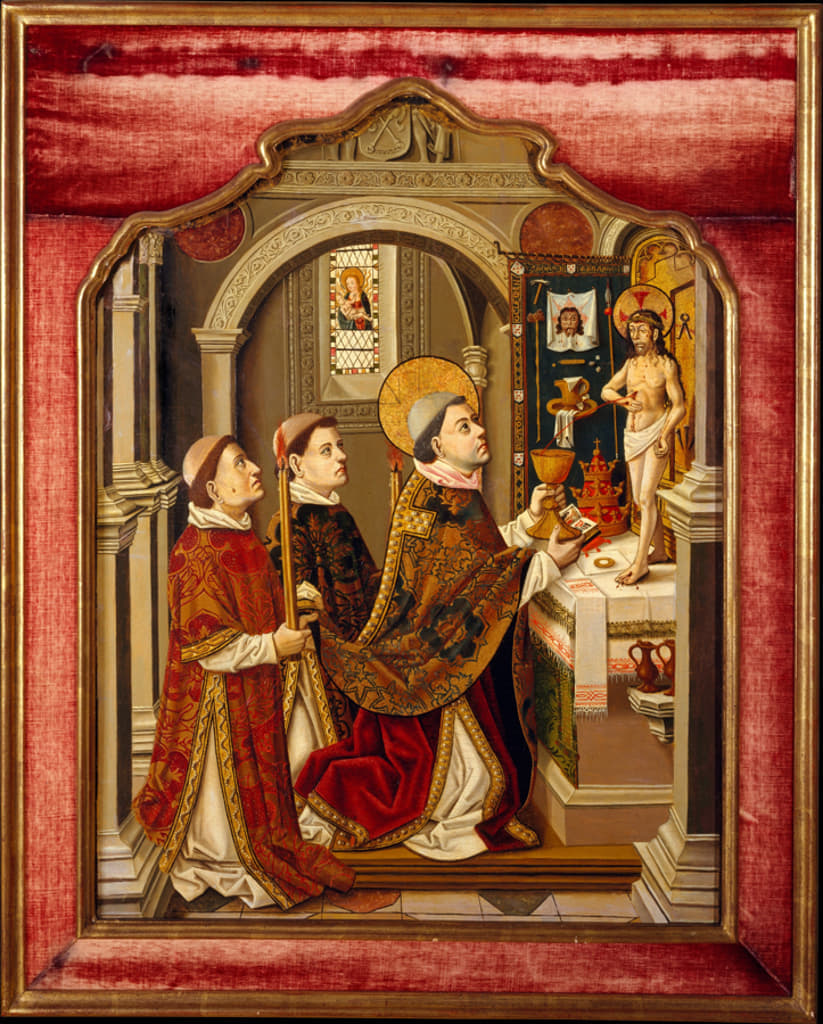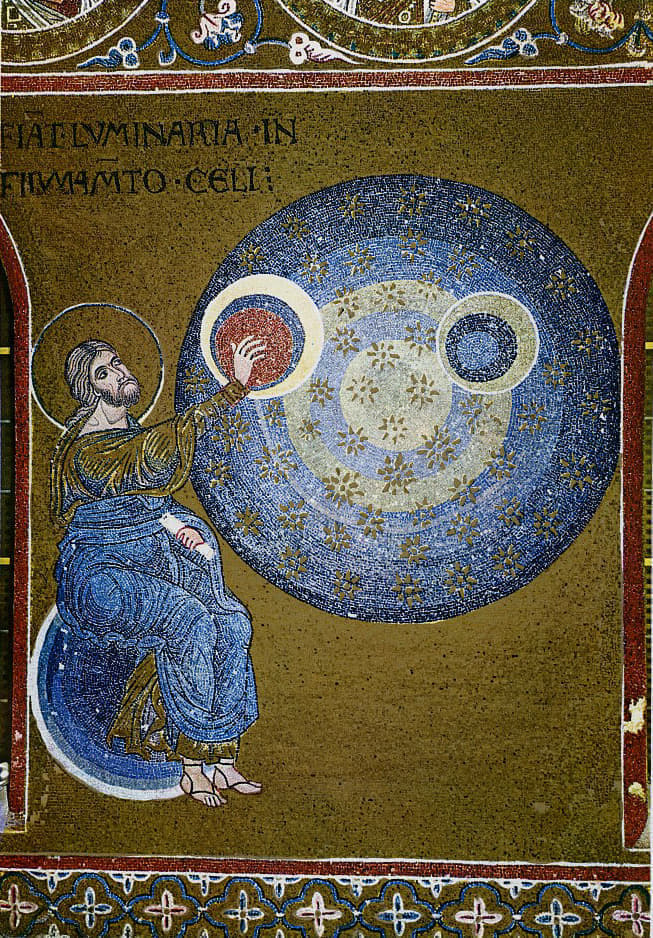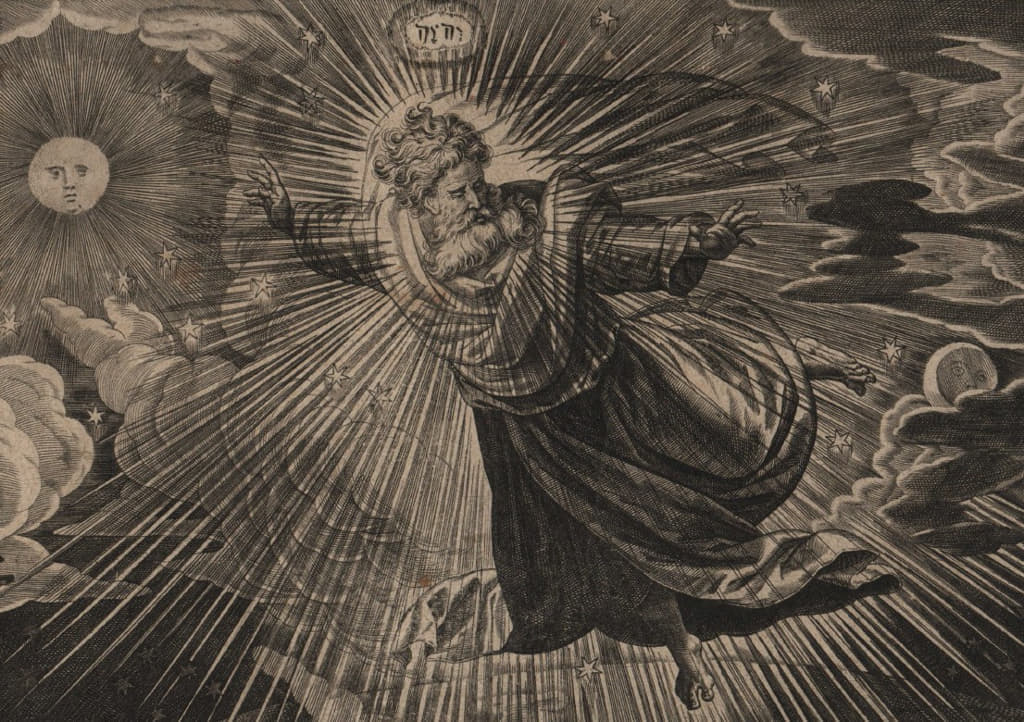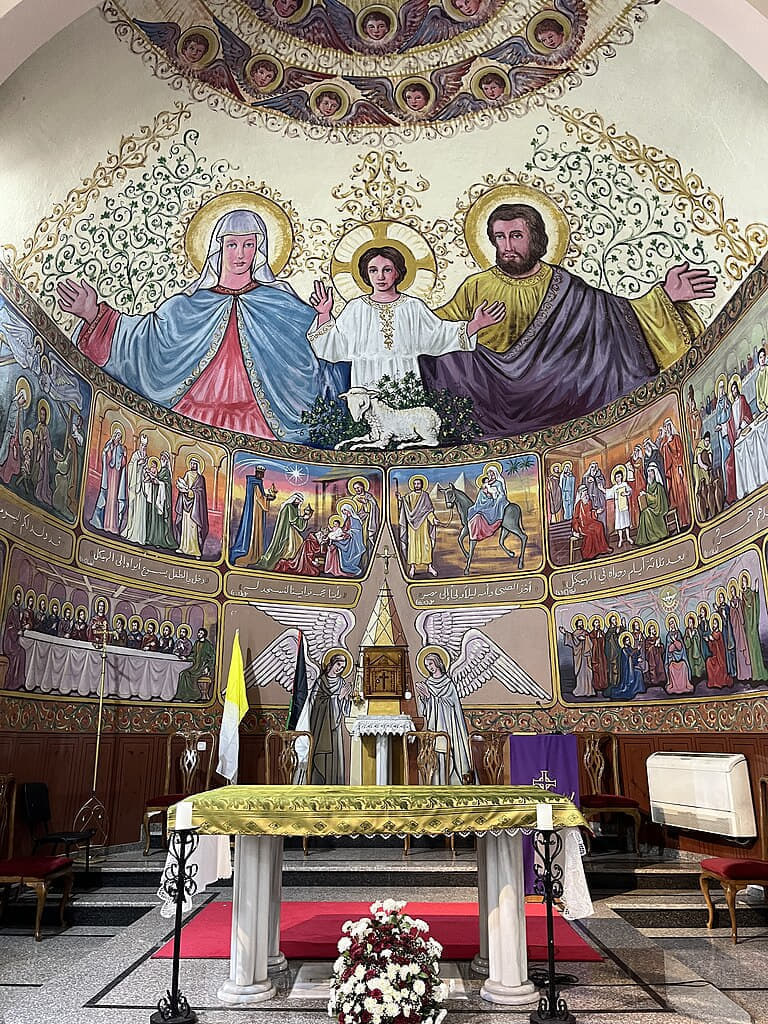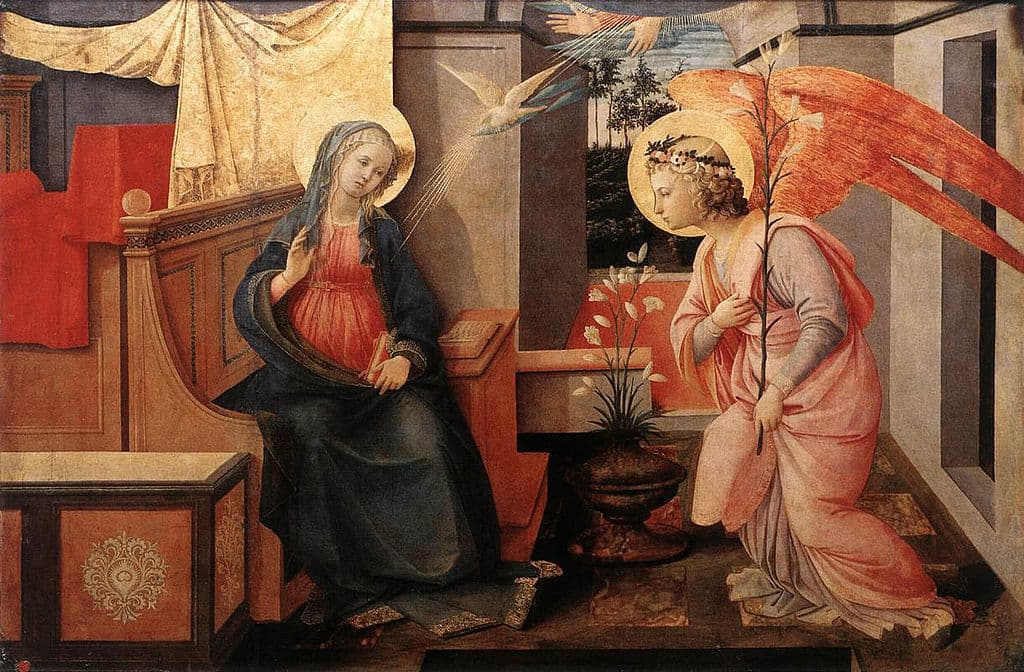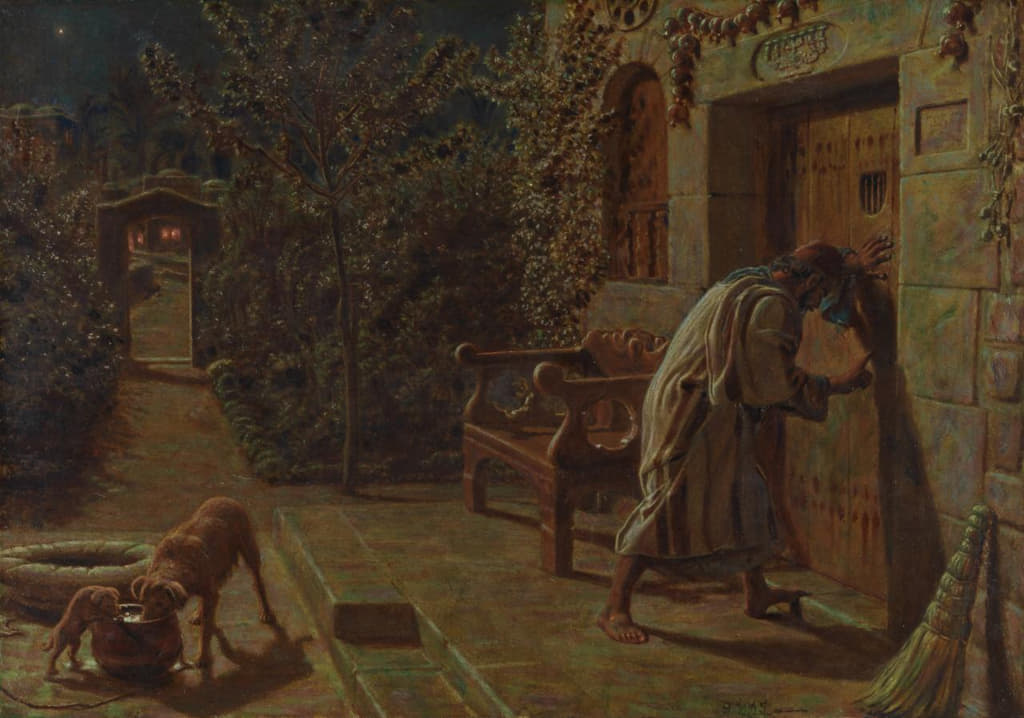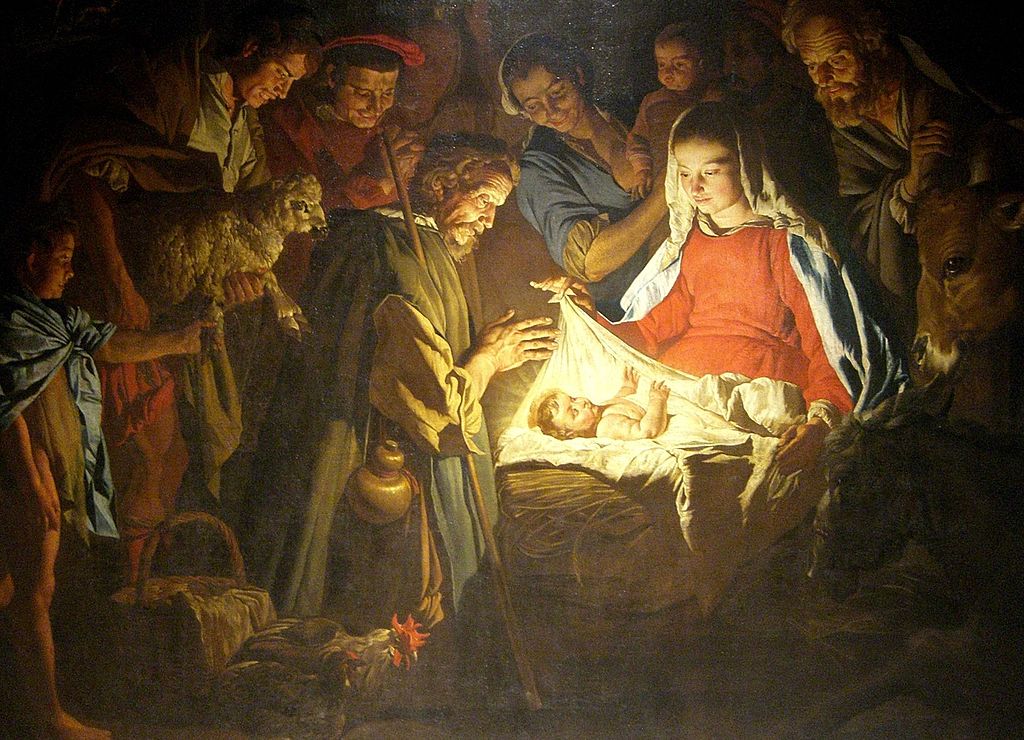I. Life, Causality, and the Catholic-Protestant Divide
What do the definition of life and the philosophical concept of “secondary causality” have to do with hot-button issues that separate Catholics and Protestants? A lot, I believe, and what follows here is an introduction to a concept that can be explored in more detail.
We live in a time when nominalism, existentialism, and plain old ill-will have robbed many of fundamental common-sense certitudes. Witness the spectacle of a member of the nation’s highest court refusing to define “woman,” justifying herself with the flimsy pretext that she is not a biologist, as if foundational realities regarding human nature were the exclusive domain of a caste of experts in white lab coats.
Those who have not lobotomized themselves with the dirty scalpel of progressive ideology can say what a woman is, what a man is, and what a baby is, even if the latter is still in utero.
Speaking of which, those of us who are anti-abortion (and we should not fear that label) need to be able to define that thing we say we are for: life. There are many philosophical definitions of life, but none of them improves upon the simple one that Brother Francis taught us: “the power of immanent activity.”
Brother illustrated this by describing a scene outside of his office window: It was a windy day, and there were leaves and other small objects being blown in one direction by the powerful gusts. The uniformity of motion was disturbed by a small bird, not much bigger than some of the objects being blown about, going in the opposite direction. The inanimate objects were all subject to transient action, that is, they were being acted upon by the force of the wind. But that bird, being alive, was capable of activity that was inherent to itself, or, as the definition has it, the bird was capable of “immanent activity” because it was alive, the power of locomotion being the basis of numerous acts of sentient life.
****
As a material object, the bird is subject to transient activity as well — it can be blown about, thrown, eaten by a predator, etc., but inanimate objects (like the dead leaves, bits of paper, sand, etc.) are only capable of transient activity. There is nothing in them by which they can act. The principles of activity are all outside them. The tiniest living plant, no matter how fragile, how dependent upon other things, how radically contingent, is capable of acting by a power intrinsic to it: growing, assimilating nutrition, reproducing its kind. If a living thing has the higher nature of animals, it can also move, know, and pursue the objects of its appetites. Man, as a rational animal, has the higher faculties of intellect and will in addition to all those other powers he shares with lower forms of life. In the higher gradations of life, immanent activity takes on a nobler character, but whether he is exercising the powers common to lower life forms or those requiring the use of his mind, man’s life (his anima, which also means soul) is the principle of his immanent activity. It so happens that the superior nature of his immanent activity puts man at the pinnacle of material creation.
Even though living beings are capable of immanent activity, and man specifically is capable of the elevated activities of thinking and willing, it remains true that all that is not God is radically dependent upon God, for such is the very notion of creatureliness. God not only created all that is, He also sustains it in existence. Yet, does it not remain true that all the immanent activities of living things on earth are really and truly their acts, things proper to them that they actually do? Yes! This is the case whether we consider the mighty oak reaching toward the sky by assimilating water, nutrients from the soil, and sunlight; or the bee making honey and wax; or the man plying his trade. In all its grand totality, creation is the work of God, its First Cause; yet, God willingly and purposely operates through secondary causes all the time. Rain may drop from the heavens—by which I mean the sky—but it does so following laws of nature that are measurable: there is a cycle, dependent on the stable natures of things, by which water evaporates, becomes clouds, then eventually returns to the thirsty ground or the aquatic surfaces of the world in a scientifically observable way (regardless of the sometimes frustratingly imperfect predictions of the meteorologists!). We can truly say that God makes it rain as He sustains all that is and gave to the water, the sun, the atmosphere, etc., their natures by which these activities occur. But the genuine causal role of these created things cannot be denied. It is observable, and is no mere phantasm. This is what we call “secondary causality.” A secondary cause is defined by Father Wuellner as “a cause under and dependent upon the first cause; a created cause; a cause that can only specify the kind, but not the being of the effect.”
The words “first” and “second” here have nothing to do with mere chronology. We are speaking metaphysically. The simplest way to clarify the notion is to say that what is second is absolutely subordinate to and dependent upon what is first.
God could have established a created order in which all making and all change comes about directly and exclusively from Him, just as He created all that is ex nihilo in the beginning. He could have opted to be not only the First, but also the Only Cause. But He did not do so. Instead, He ordained sexual and asexual reproduction so that animals and plants can reproduce themselves. He also made man, created in His image and likeness, to be himself a maker. He remains the First Cause, but all living material things come from others of their kind acting as secondary causes; man’s industry can, “under and dependent upon” God, yield goods of all sorts: agricultural, mechanical, technological, literary, artistic, moral, etc.
Common sense and daily experience tell us this is real. Without secondary causality in creation, the universe would be a far more mystifying thing and no stable order would be observable. The laws of gravity, gas diffusion, motion, entropy, etc., would all be non-extant. Among the myriad cause-and-effect experiences of human life, we would be left wondering where babies come from, since it’s not Mommy and Daddy (with God infusing an immortal soul). Imagine if Volkswagens just dropped from the sky by divine fiat, and we needed no factories to produce them. This might seem like a sort of theocratic socialist paradise, but such a world would be less predictable and more dangerous, with nobody to sue for deaths and injuries from falling Volkswagens.
Secondary causality is so present to us that we usually take it for granted. I recall my mother informing me that the grass would not simply cut itself. Neither, apparently, would the First Cause descend to do the job. That was appointed to me, apparently as a result of Adam’s sin along with the more immediate maternal command. (And let me say that Louisiana summers lend a certain poignancy to the words “the sweat of thy face”—Gen. 3:19).
Speaking of parental commands, in our family lives, we understand that good parenting helps children to develop well, whereas bad parenting is harmful. Heli was blamed for failing to discipline his sons, leading to dreadful consequences for his house and for all Israel. By contrast, Abraham (whose original name, Abram, means “good father”) carried out a wonderful job of parenting with Isaac. While offspring eventually become responsible for their own actions, both good and bad parenting have undeniable effects—as do good and bad education, good and bad moral example, etc. All this fits into our category of secondary causality.
****
The order of grace parallels the order of nature and builds upon it. The natural man is elevated by grace into the supernatural order. He is a “new creature” (cf., 2 Cor. 5:17, Gal. 6:15). He is not only alive with the natural life of man, but he has the “eternal life” that comes from grace: “Now this is eternal life: That they may know thee, the only true God, and Jesus Christ, whom thou hast sent” (John 17:3; cf., many other passages). That life is consummated in heavenly glory, but is commenced on this side of the grave by grace, so Saint John could write, while yet in this veil of tears, “God hath given to us eternal life. And this life is in his Son” (1 John 5:11). This new and higher life also has its own “immanent activity” that is proper to the new nature grafted into us by grace. Acts of faith, hope, and charity, of the Gifts of the Holy Ghost, the Fruits of the Holy Ghost (Gal. 5:22-23), and the sublime Beatitudes are all proper to this life. Without the First Cause giving us eternal life, such acts would be impossible, but the acts are nonetheless our acts, and we shall be judged upon them as upon our evil deeds: “And I saw the dead, great and small, standing in the presence of the throne, and the books were opened; and another book was opened, which is the book of life; and the dead were judged by those things which were written in the books, according to their works” (Apoc, [Rev.] 20:12; cf. Matt. 16:27, Matt. 25:31-46, Rom. 2:6-8).
Just as God is radically necessary and we contingent in the order of nature, so, too, is He indispensable and we utterly dependent in the order of grace. Yet, without a hint of contradiction or an iota of irony, our Christian common sense must here also acknowledge secondary causality at work. It would not do to use the examples of the sacraments, for our Protestant brethren do not accept them — or, to be more accurate, not all Protestants accept all seven. To limit ourselves to explanations that they would accept, let us consider the Bible, preaching, the Twelve Apostles, the wood of the Cross, human language, even grace itself, which, while so sublime a thing, is not, after all, God Himself. All of these are creatures, yet all have a real causality in human salvation. Moreover, each can be further broken down into constituent parts that show more minute secondary causes at work. Preaching, for instance, necessitates created human language, our human minds, the modes of transportation or broadcast by which the preacher is made present to his auditors, the vocal chords of the preacher, and the ears of those who hear (“Faith then cometh by hearing” [Rom. 10:17]), etc.
Concerning authentic preaching, Jesus said to the seventy-two disciples, “He that heareth you, heareth me; and he that despiseth you, despiseth me; and he that despiseth me, despiseth him that sent me” (Luke 10:16). From God, the First Cause, to the sacred Humanity of Jesus, to the disciples, to their hearers. A clear-cut case of secondary causality operating in the supernatural order.
Next I would like to illustrate the concept of secondary causality with further Biblical examples, showing how certain key doctrines of the Protestant Reformers are refuted by the clear scriptural data on the subject.
II. Causality and the Biblical Economy of Salvation
When God created all things in the beginning, He did so for a purpose worthy of Himself: His own glory. It may surprise readers to learn that this is actually a dogma of the faith and that anyone who denies it is under the formal anathema of an Ecumenical Council: “If anyone … denies that the world was created for the glory of God: let him be anathema.” (Vatican I, Session 3, Canon 5, “On God the creator of all things.” This is one of the canons appended to the end of Vatican I’s Dogmatic Constitution on the Catholic Faith).
God is glorified by all creation, including stars and planets, rocks and rivers, trees and flowers, and all manner of brute beasts. Each of these glorifies God by acting in accordance with the nature it received from Him. All the aforementioned creatures give God glory by necessity, there being no free will involved.
There are vestiges of God all throughout these lower orders of creation, “footprints” of the Creator which reveal Him to the knowing mind at the same time they effect His glory. This would explain why certain Psalms and the Canticle of the Three Children from the Book of Daniel summon various inanimate and brute creatures to join with us in the praise of God. The Church has incorporated these cosmological prayers into her liturgy.
In creating man, God endowed this higher creature with His own image and likeness. By grace, He also gave men power to be made children of God (cf., John 1:12). This creature has understanding and free will. This creature can know God, and can freely love and serve Him, thereby rendering Him glory in a way superior to what lower creation can do.
In material creation, we humans are unique in having such potencies; we share them only with those pure spirits we call angels.
According to his nature as a knowing and free person, man can, relying on “the First Cause,” actually be a cause of God’s glory. This is the highest manifestation of what we call “secondary causality.”
Which brings me to the subject of Part I above, in which I wrote about the concept of life and the philosophical distinctions of primary and secondary causality, applying these concepts to certain points of doctrine that separate Catholics and Protestants. I concluded that piece with a promise that I would illustrate the concept of secondary causality with further Biblical examples to refute certain key doctrines of the Protestant Reformers.
Let us recall that the original Protestant “Reformers” — and I am speaking principally of Luther and Calvin — denied the freedom of the human will. Luther referred to the will as “enslaved,” famously making an odious comparison between our will and a donkey. If God rides the donkey, the will is compelled to be good; if the devil, evil.
But so much of Holy Scripture’s plain sense refutes this (not to mention the constant tradition of the Church through the ages!). While all secondary causes, including our free wills, are radically and absolutely dependent on the First Cause, this does not render God the “Only Cause” neither does it obliterate the reality of secondary causality.
Let us begin our brief journey through the New Testament with Saint John the Baptist. Saint Luke relates to us the words of the Angel Gabriel to Saint Zachary, who learns that his son would “convert many of the children of Israel to the Lord their God … [and] turn the hearts of the fathers unto the children, and the incredulous to the wisdom of the just, to prepare unto the Lord a perfect people” (Luke 1:16-17).
Obviously, God Himself converts people, changes hearts, and prepares people for perfection — indeed, prepares them for the coming of Jesus, which was the vocation of the Baptist. But if these words of the Gospel have any cogent meaning (and they do!) then God not only works directly on men’s intellects and wills by His grace, but also does so indirectly through other men, men like Saint John the Baptist. There are multiple layers of secondary causality operating here.
The parables of Our Lord provide numerous examples to illustrate secondary causality and refute the heresies that deny it. A good one to begin with is the very familiar Parable of the Sower, the first of Our Lord’s parables, found in all three of the Synoptic Gospels (Matt. 13:3 ff., Mark 4:3 ff, Luke 8:5 ff.). Jesus Himself explained it to the Apostles in private after preaching it to the multitudes:
Hear you therefore the parable of the sower. When any one heareth the word of the kingdom, and understandeth it not, there cometh the wicked one, and catcheth away that which was sown in his heart: this is he that received the seed by the way side. And he that received the seed upon stony ground, is he that heareth the word, and immediately receiveth it with joy. Yet hath he not root in himself, but is only for a time: and when there ariseth tribulation and persecution because of the word, he is presently scandalized. And he that received the seed among thorns, is he that heareth the word, and the care of this world and the deceitfulness of riches choketh up the word, and he becometh fruitless. But he that received the seed upon good ground, is he that heareth the word, and understandeth, and beareth fruit, and yieldeth the one an hundredfold, and another sixty, and another thirty. (Matt. 13:18-23)
The seed that was sown was universally the same: it was “the word of the kingdom.” What varied was the condition of the ground upon which it fell: (1) the wayside, (2) stony ground, (3) thorny ground, and (4) good ground. The good ground itself was not all of the same quality, inasmuch as the yield of fruit varied from one part of the ground to another. Saint Luke speaks of the men represented by the good ground as having a “good and perfect heart”; these men, “hearing the word, keep it, and bring forth fruit in patience” (Luke 8:15).
Is it not plain from this that secondary causality is operative here? Men cooperating with grace, or failing to do so, is what distinguishes the different kind of ground, while the seed itself (the free gift of faith) is the same in each case, even if it be accompanied by different degrees of actual grace to accept it. There is also variety in the virtue of the “good ground,” which refutes Calvin’s idea that there is a radical equality among the saints, while it affirms the existence of different degrees of merit among the just.
Next, we will look at the Parable of the Pounds. “And calling his ten servants, he gave them ten pounds, and said to them: Trade till I come” (Luke 19:13). Each of these servants received the same amount of money. Each was directed to use it to turn a profit. We learn only of three of the servants. One of them doubled the amount he was given and was praised for his good work. A second gained a profit of fifty percent over the original he was given and was also praised. The third simply returned the original ten pounds to his master with a rather lame excuse. Far from being praised, this servant is reprimanded severely and his ten pounds are given to the first servant, the one who doubled the initial investment.
In this parable, the First Cause gives something indispensable for the task at hand: “investment capital.” He orders his servants to enter into the chain of causality and do something with the money to give it increase. Rewards and punishments are meted out accordingly. Secondary causality at work.
Similar to the Parable of the Pounds is the Parable of the Talents, found in Matthew 25 — which, you may recall, is all about judgment. While the details differ somewhat — e.g., this time each servant is given different amounts — they resemble one another inasmuch as two servants are praised and rewarded, while a third is punished. His punishment is worth recounting: “And the unprofitable servant cast ye out into the exterior darkness. There shall be weeping and gnashing of teeth.” This man’s crime was returning to his master the one talent he was given, and not making more money from it, as his fellow-servants had done. Again, the servants are being commanded to cooperate with the causality of their Master so that they will be “profitable.” In the supernatural life, this is exactly what God wants.
In the Parable of the Friend at Midnight (Luke 11:5-13), we learn lessons on persevering prayer. (This is one of at least two parables that impart this lesson.) Jesus clearly explains the point of the parable this way: “And I say to you, ask, and it shall be given you: seek, and you shall find: knock, and it shall be opened to you. For every one that asketh, receiveth; and he that seeketh, findeth; and to him that knocketh, it shall be opened” (Luke 11:9-10). The Savior Himself, who perfectly understands and teaches about the economy of human salvation, is clearly attaching a causal, salvific role to human acts. One might object that we need the promptings of actual grace to ask, seek, and knock. I wholeheartedly agree with this; it is no objection to the main argument, which is that our willing performance of these acts — under the influence of grace — has a causal role in our salvation.
In the very brief Parable of the Barren Fig Tree (Luke 13:6-9), we are given a clear proof that God wants us to bear fruit or be cut down. God plants the “tree” of our spiritual life; His servants “dig it about and dung it,” but it must bear fruit or be punished.
In the Parable of the Invited Guests (Luke 14:7-14), we find these two gems:
- Because every one that exalteth himself, shall be humbled; and he that humbleth himself, shall be exalted” (v. 11).
- But when thou makest a feast, call the poor, the maimed, the lame, and the blind; and thou shalt be blessed, because they have not wherewith to make thee recompense: for recompense shall be made thee at the resurrection of the just” (vs. 13-14).
Taking it as a given that God’s grace aids us in doing the good things Our Lord recommends here, we still learn from this parable that there is a cause-and-effect sequence that is dependent upon our human activity, i.e., our cooperation with grace. The reflexive pronoun lends a certain emphasis to the causal role of the humble man in his own exaltation: “he that humbleth himself, shall be exalted.”
Without connecting the dots for the reader, I will recommend four other parables for your consideration. Play a little game of holy erudition and read these yourself to see how secondary causality clearly enters into the economy of salvation as Jesus teaches it to us in these beautiful stories: The Good Samaritan (Luke 10:29-37), the Prodigal Son (Luke 15:11-32), the Persistent Widow (Luke 18:1-8), and the Pharisee and the Tax Collector (Luke 18:9-14).
Let me conclude by citing some passages from the Apostle to the Gentiles. Their application to this argument should be obvious:
- For which cause I admonish thee, that thou stir up the grace of God which is in thee, by the imposition of my hands.” (2 Tim. 1:6)
- Let a man so account of us as of the ministers of Christ, and the dispensers of the mysteries of God.” (1 Cor. 4:1)
- I have planted, Apollo watered, but God gave the increase.” (1 Cor. 3:6)
- I became all things to all men, that I might save all.” (1 Cor. 9:22)
Let us commit ourselves to giving glory to God by knowing, loving, and serving Him — and seeking Him in all things. These grace-aided activities on our part allow us voluntarily to cooperate with the First Cause as secondary causes of God’s glory and of our own salvation. We can even achieve those ends by working to save others (see Saint Paul’s last quote!). In doing all this, we enter into God’s very purpose in creating the world.
Brother André Marie is Prior of St. Benedict Center, an apostolate of the Slaves of the Immaculate Heart of Mary in Richmond New Hampshire. He does a weekly Internet Radio show, Reconquest, which airs on the Veritas Radio Network’s Crusade Channel. This article appears courtesy of Catholicism.org.
Featured: The Importunate Neighbour, by William Holman Hunt; painted in 1895.




